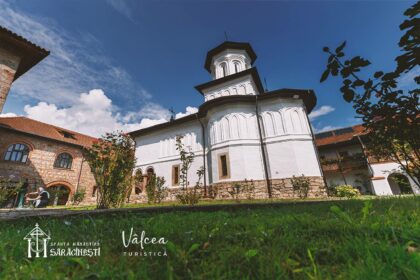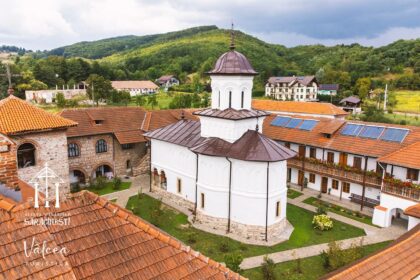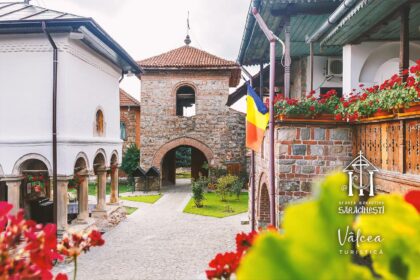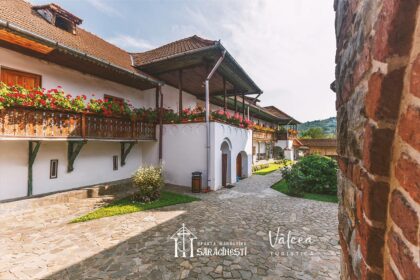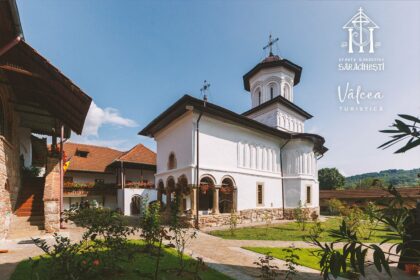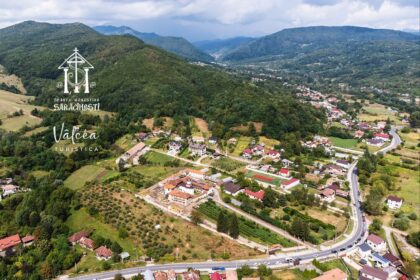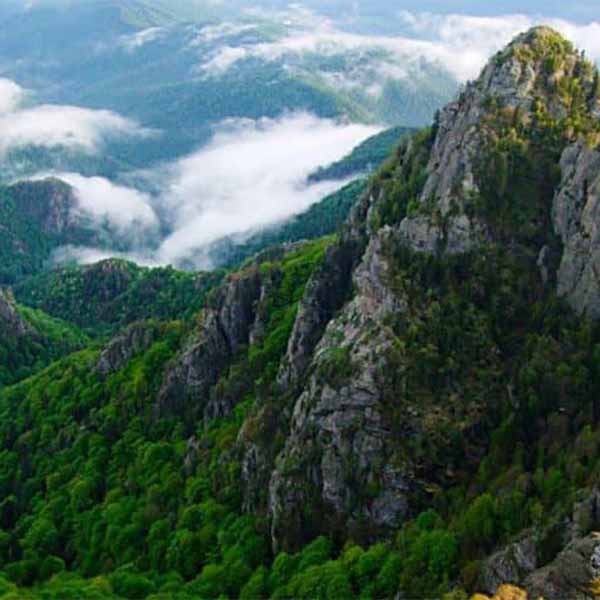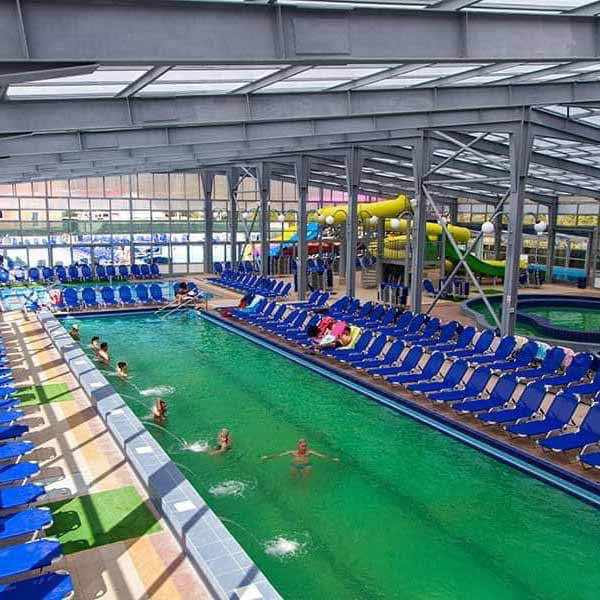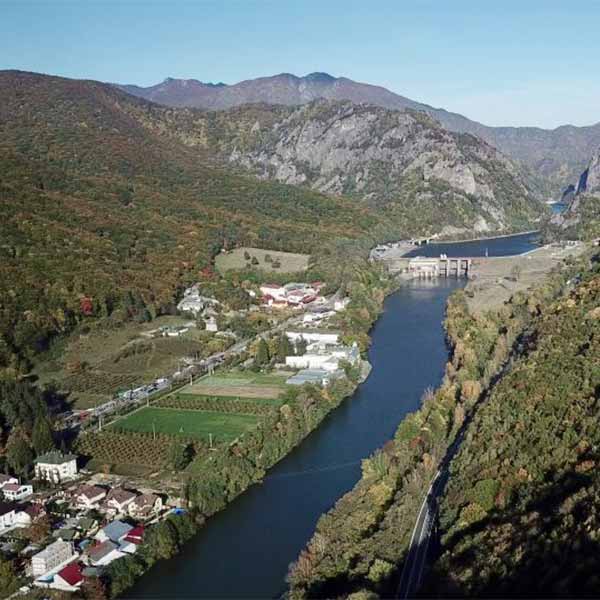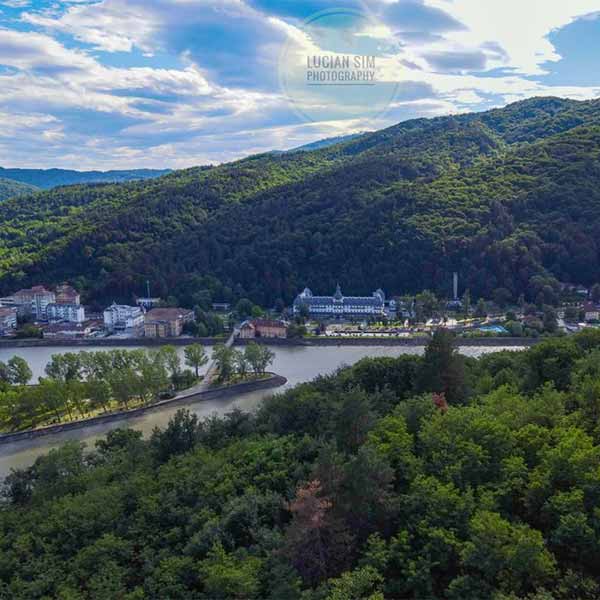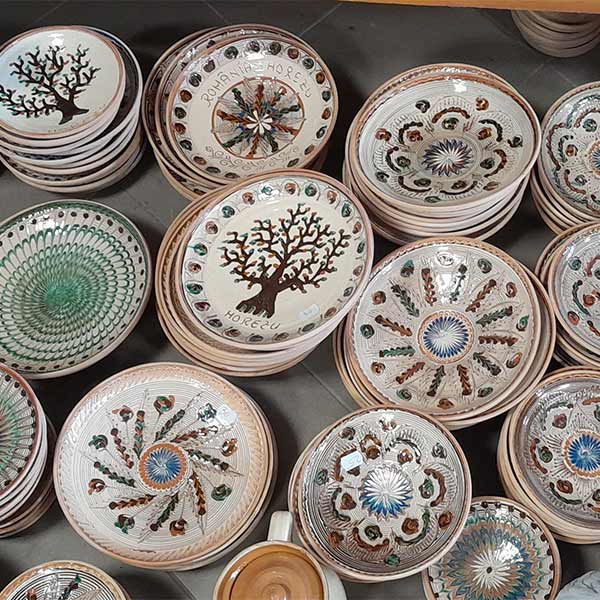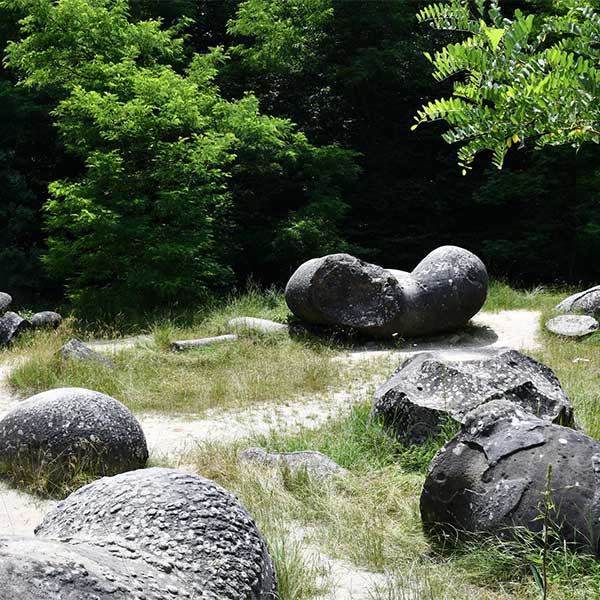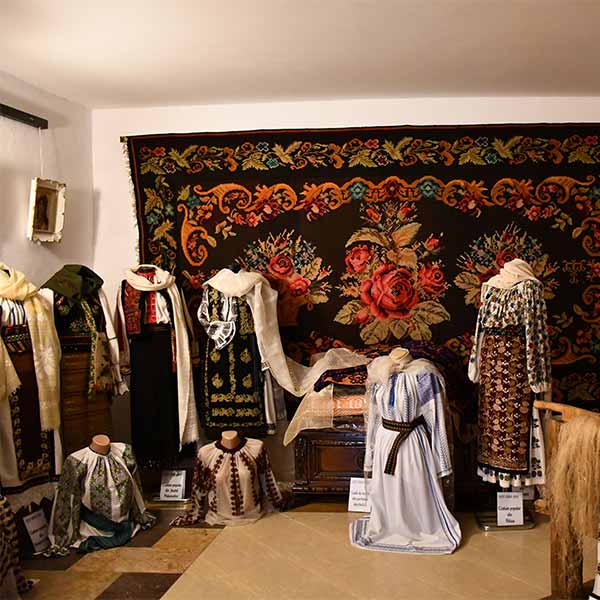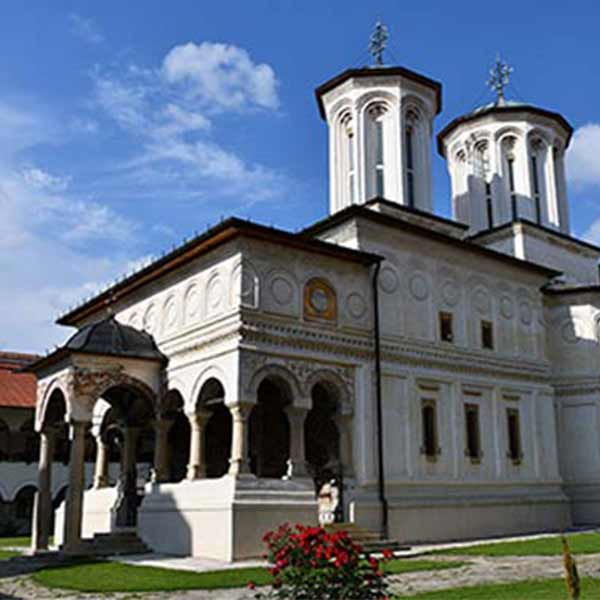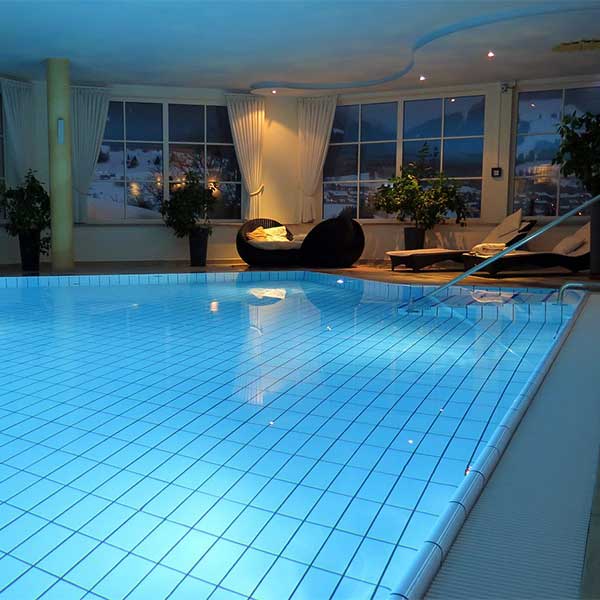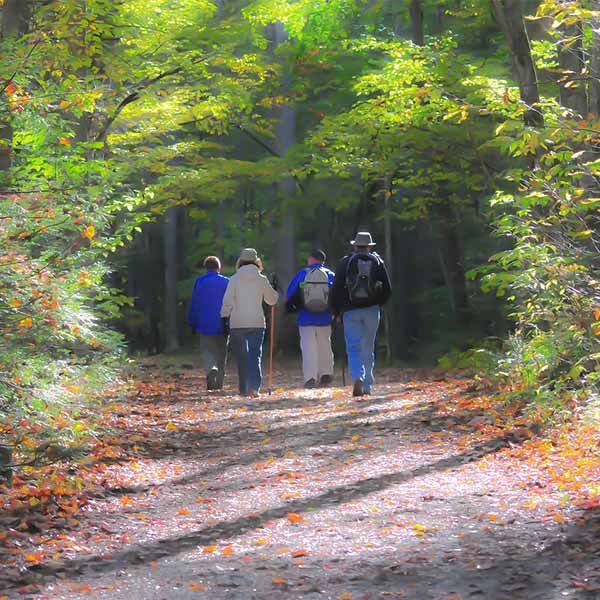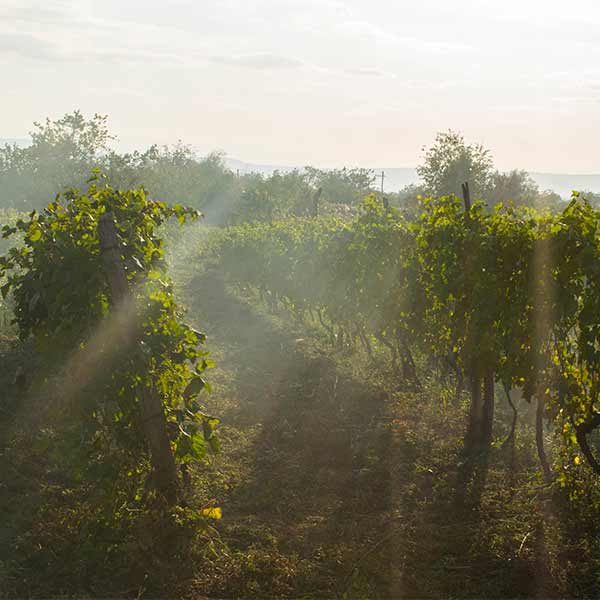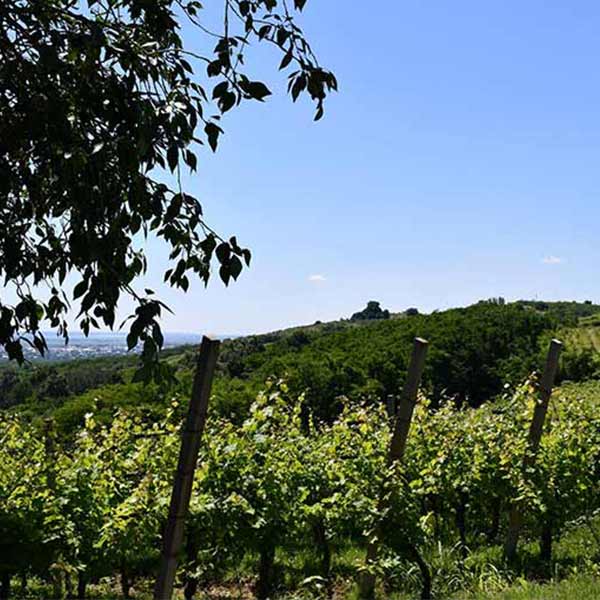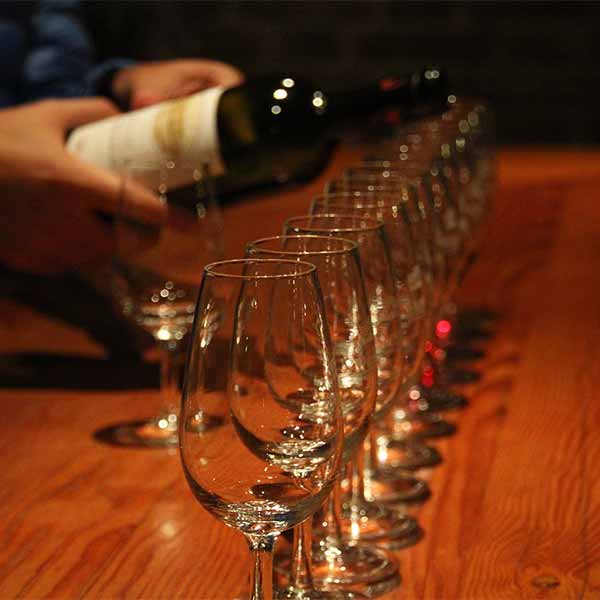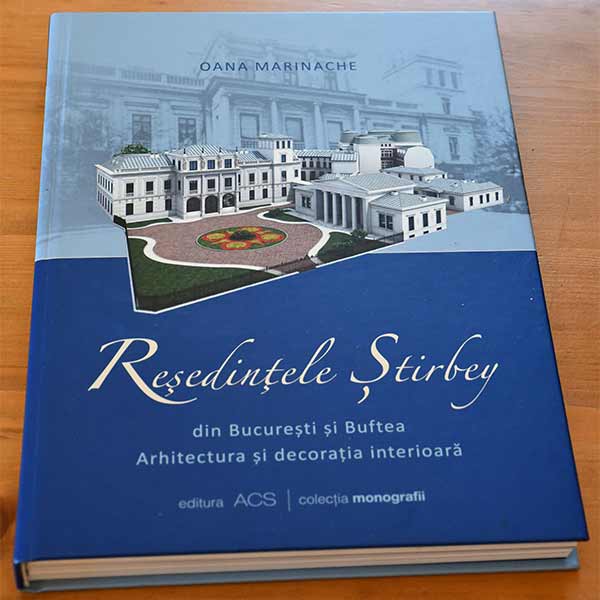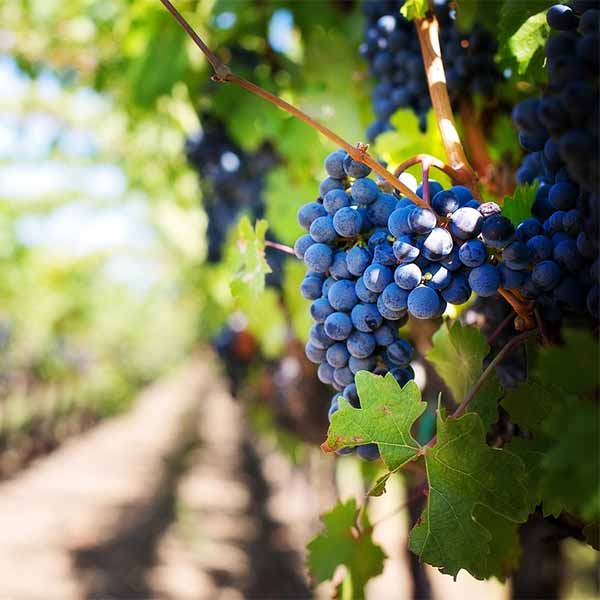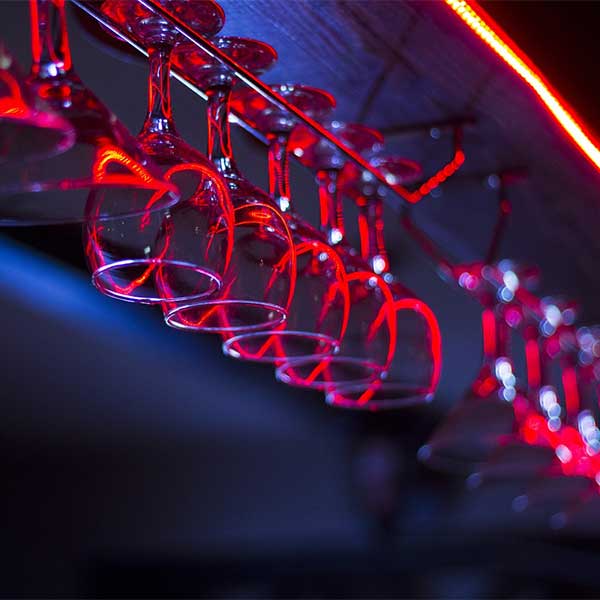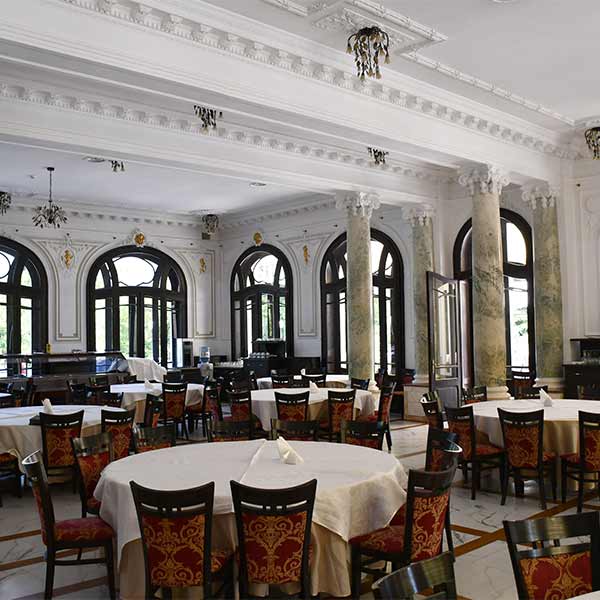
Saracinesti Monastery
Saracinesti Monastery
Here, at the confluence of the Olanesti and Cheia rivers, in the middle of the village of Valea Cheii, which until 1964 was called Saracinesti, as the pisania says, for almost 300 years the Church of the former Saracinesti Monastery has been battered by winds and gales.
Pisania: “†With the will of the Father and with the help of the Son and the Holy Spirit built this church from the foundation with all its ornament in praise of the Adoration of the Blessed Virgin Bogorodite and with the churches around it at the expense of Father Stefan, Bishop of Ramnic, being given the estate with the houses of Tanasie Pausescul in the days of Serban Cantacuzino Voevodul. And Zosima Er. (monk) abbot. Years from Adam 7196 and from Jesus Christ 1688 Sept. 28.”
| Schedule: | |
|---|---|
| Monday to Sunday | 7:00 – 21:00 |
From the deed of gift made on 7 June 1687 by Tanasie Pausescu the commissioner and Marta the nun, his mother, to Father Stefan – bishop of Ramnic, it appears that the estate in the middle of which the church and the monastery buildings were built belonged to the Saracen nobles, hence the name of the monastery and the surrounding village – Marta the nun, in her religious life was called Mihalcea, wife of Radu Pausescu the cleric.
The daughter of Nicula Logofatul Saracinescul together with his son Tanasie Pausescu inherit the Saracinesti estate from his brother and uncle Tanasie Comisul Saracinescul – because “other coons of his body did not remain”, as it happened with Tanasie Pausescu from whom there were no descendants.
The construction begins in 1688 in an era of full development of Byzantine church art on our land. In 1693, the main founder, Bishop Stefan, died and was buried in the church’s tent, which he left unmarked.
Bishop Damaschin together with Paisie the Hermon, John the Archimandrite of Huredi and Dosoftei the Hermon, 30 years later in 1718 (7226) brought to Saracinesti Theodosius, George and Preda, the same painters who painted the chapel of Hurezi and other Brancovenian churches, to paint the church as it is seen today. The founders we have mentioned so far are painted in the pronaos of the church as follows: Bishop Stefan and Bishop Damaschin holding the church in their hands above the door, inside; John the Archimandrite, Paisie and Dosoftei collaborating in the painting on the wall at midday; Tanasie vel commissul Saracinescu with the maiden of Ilina, Tanasie vel clucer Pausescu with the maiden of Aspra, on the wall at mid-night.
From the buildings and inventory of 1688-1693 still exist:
– The church in its original form;
– The bell tower on the wall of which you can see the inscription: “Sava 7200 = 1692”;
– The building on the north side of the church, which was used as a priory and kennels, whose medieval origin is proved by the walls and the construction of the cellar;
– The small bell, cast for the first time in 1612 and returned in 1930 by Hieronymus Protosinghelul
– A wooden hand-windowed cross with the inscription: “†Stefan bishop 7200 = 1692”.
In the course of time, this settlement was also helped by others who showed love for the holy places.
It was a monastery of nuns until around 1860, then it was a monastery of monks until 1873. From 1873 to 1913 the church was a branch of the Cheia parish and the houses housed the primary school to which pupils from neighbouring villages came: Pausesti, Olanesti and Cheia.
From 1913 to 1960 it was a monastery of nuns, when it was abusively abolished. Nowadays the church serves the believers of Valea Cheii village and the houses have been transformed into a home for the elderly. The property of the monastery (church and enclosure) has not been retroceded even today despite the efforts made.
Thanks Vâlcea Turistica for permission to use the photos and information.

